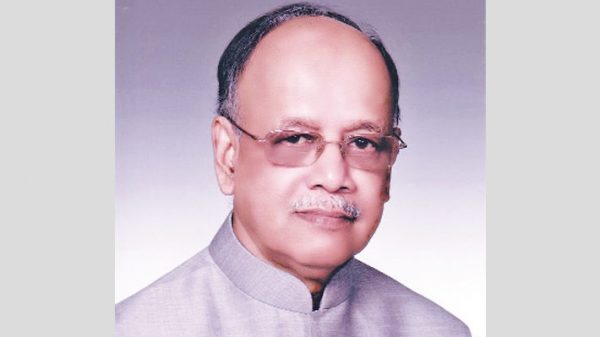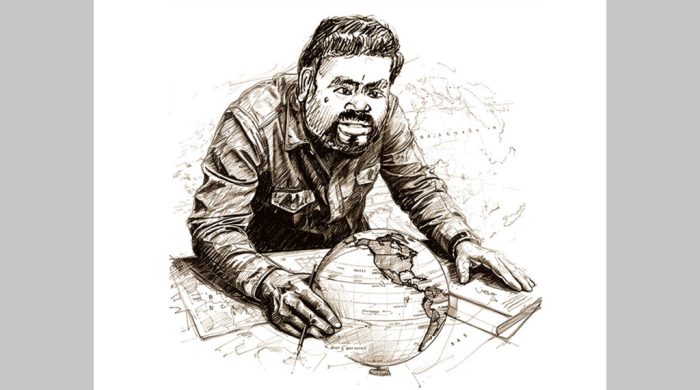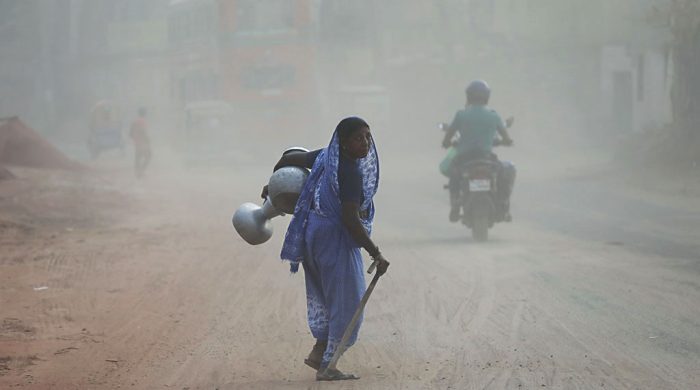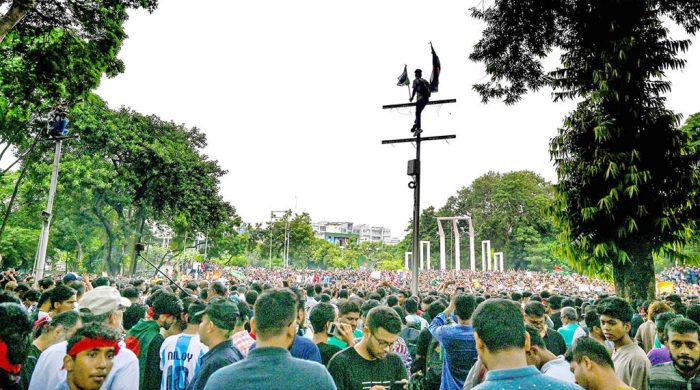Looking beyond Golden Jubilee Celebration

- Update Time : Saturday, April 3, 2021
- 196 Time View

The Golden Celebration of Bangladesh’s independence, which began amidst Covid-19 pandemic on 17th March 2021 ended on 27th March 2021 with a big success. Those who attended the ten day programmes had to follow prescribed health protocols and, needless to say, though the number of invitees were limited to five hundred hardly on any day five hundred guests could attend the programmes due to the prescribed protocols, one being producing the Covid-19 ‘negative’ certificate. Those interested did not miss the programmes as they were telecast live on all TV channels. 17th March was the 101st Birth Day of the Father of the Nation and on this day virtually the Birth Centenary of the Bangabandhu was concluded. Initially all these programmes were planned to be big events but due to Covid-19 pandemic most of the programmes had to be curtailed and held virtually.
The Golden Jubilee celebration is a lifetime celebration for many and cannot be repeated and most of the 1971 generation who were fortunate enough to be a witness to this auspicious occasion would not live to celebrate the birth centenary of the country. Our generation is lucky that we fought for the liberation of the country and also could celebrate its Golden Jubilee.
The Golden Jubilee celebration and the conclusion of the Bangabandhu’s birth centenary have been unique in many respects. Heads of Governments and Heads of States of about fifty countries across the world sent their messages on these occasions recalling the contribution of Bangabandhu in giving birth to an independent country and praising his extraordinary quality as a leader of the oppressed people. Perhaps it is for the first time that the five permanent member states of the UN came together to congratulate Bangladesh on this occasion and lauded the visible progress it made in the last fifty years in all socio-economic fronts, and the leadership qualities of its Prime Minister Sheikh Hasina that enabled the country to graduate from the LDC status to lower Middle Income status according to UN.
Though amidst the current pandemic situation most of the invitees who were expected to come in person to Dhaka could not make it, the Heads of Looking beyond Golden Jubilee CelebrationStates and Heads of Governments of SAARC countries attended the ten day long function held in Dhaka. Pakistan and Afghanistan remained unrepresented. Pakistan remained unrepresented for obvious reasons as for Pakistan the emergence of Bangladesh meant dismemberment of Jinnah’s Pakistan. But still Pakistan’s Prime Minister Imran Khan sent a message to the Prime Minister of Bangladesh felicitating her on this occasion. Afghanistan is in a political turmoil involving the Taliban takeover of the country and the fluid nature of the politics which once was part of Gandhara civilization (Circa 1500-Circa 1200 BC). The country today is virtually back to the Stone Age and is struggling to survive as a viable nation. So, it is not unexpected that the Fifty Years of Bangladesh will go unnoticed in Afghanistan.
The representation of the other SAARC nations is not only historic but also socio-politically important. SAARC is an acronym that stands for the South Asian Association for Regional Cooperation and was formed in 1985. Initially the Association comprised of seven countries of the Indian sub-continent. Afghanistan joined SAARC in 2007 making it as the world’s largest regional group. There are also several countries and EU that have observer status in SAARC. Originally it was perceived to be a similar version of European Union for socio-economic gains of all member countries but unfortunately the Association failed to achieve its perceived goals due to mistrust amongst some of the member states, especially between India and Pakistan. The Association was mandated to deal with multilateral issues that would benefit the people of member states but both Pakistan and India got involved in bilateral issues making the Association virtually non-functional. However the visits to Dhaka by the five dignitaries from the SAARC countries except from Pakistan and Afghanistan have ushered in a new era involving some common understanding including the importance of connectivity and economic cooperation.
The eight SAARC member states together have a combined area of nearly 2 million square miles, making up a total of 3% of world’s area. The population across all the member states is estimated to be over 1.7 billion, accounting for 21% of the world’s total population and 4.21% (US$3.67 trillion) of the global economy. Unfortunately, at no time the member states could realize its economic and social strength and make use of its extraordinary potential from education to infrastructure development and more importantly expansion of its trade gains notwithstanding the fact that approximately 45 per cent of its population belongs to middle class, having purchasing power of consumer goods and non-essential commodities beyond everyday necessities.
Unfortunately the limitless economic potentialities of the SAARC countries could never be realized due to trust deficiency amongst the member nations. Pakistan-India’s mistrust is understandable though recently Pakistan’s Prime Minister Imran Khan and its army chief have expressed their eagerness to improve the bilateral relationship with India. Pakistan imports substantial amount of consumer goods and everyday necessities from India. According to different ‘guess estimates’ informal trade between India and Pakistan ranges from US$ 250 million to US$ 2 billion. The formal trade in a normal time between the two feuding countries is approximately about US$ 4 billion. Pakistan’s President and Prime Minister also expressed similar desire on the eve of Bangladesh’s Golden Jubilee celebration of its independence to ease the relationship between the two countries. But there are many unresolved issues that have to be solved between these two nations, the first and foremost being the unconditional apology for the crimes it committed against humanity in 1971. India and Nepal recently and also on previous occasions entered into unwarranted feud over border related issues affecting the historical friendly relations between the two countries. Bhutan, a tiny Himalayan Kingdom which enjoys a special relationship with India has a long standing unresolved issue over a small terrain called Dokhlum claimed both by India and Bhutan with occasional claims coming from China. Few months back there was a standoff between Indian Army and People’s Liberation Army of China in the area which annoyed Bhutan.
With Prime Minister Rajapaksas back in office as Sri Lanka’s Prime Minister, it is reported that China wants Sri Lanka to distance itself from India which has worried New Delhi as both countries share important and strategic maritime boundaries in the south. China’s influence is also growing in the Maldives to the displeasure of India. Strangely, there are frequent border skirmishes between India and China but both countries enjoy a strong trade relationship. The trade between two nations stands at approximately US$ 46 billion.
To increase the trade volume amongst all the member nations, SAARC established the South Asian Free Trade Area (SAFTA) in 2004 which was expected to benefit 1.7 billion people. Once in operation SAFTA was perceived that the trading nations will make necessary adjustments of their tariffs which will bring equitable benefit to all trading nations. Unfortunately the arrangement failed to achieve its objective due to non-cooperation of same member states.
As of now India enjoys the most cordial and friendly relationship with Bangladesh. The people of Bangladesh will never forget the sacrifices of the people of India, especially of those in the neighbouring states, its army and Border Security Forces and the Government of India under the charismatic leadership of it’s the then Prime Minister Indira Gandhi in 1971. The relationship have gone from strong to stronger under the current Bangladeshi and Indian leadership and both the countries have managed to solve some long unresolved problems, except the crucial Teesta River sharing problem and bringing down the border killing to zero. When India’s Prime Minister Narendra Modi visited Dhaka on 26th March for two days to remain present in person in the Golden Jubilee celebration, it was seen as a positive gesture. Incidentally this was his first visit outside India during this pandemic time. He also brushed aside the opposition of some irresponsible rabble rousers in Bangladesh coinciding with his visit accusing him for the Gujarat riot of 2002 when he was Gujarat’s Chief Minister. To enquire into the incident a Judicial Enquiry Commission was formed which cleared Modi of all the accusation. But controversies still remain about the findings of the Commission. Modi also visited Bangladesh in 2015 but the local trouble makers did not object to his visit then. This time they were out on the street just for some political mileage which they failed to get. They should not forget that their irrational actions may put 200 million Indian Muslims into unnecessary trouble.
Indian Prime Minister not only attended the closing ceremony of the Golden Jubilee but also handed over the Gandhi Peace Prize awarded to the Father of the Nation Bangabandhu Sheikh Mujibur Rahman to his youngest daughter Sheikh Rehana. Next day he visited Tungipara to pay respect at the Bangabandhu’s grave and later visited two temples in Satkhira and Gopalganj. This is the first time that any Head of Government visited Tungipara. Now Modi is back home. Before return to India Sheikh Hasina and Modi also had a bilateral discussion on some important issues relevant to both the countries.
The biggest achievement from the visit of the five Heads of States or Heads of Governments of the SAARC nations to Bangladesh was that Dhaka gained a big image boost in the region and now if all the member states sincerely cooperate can make SAARC a viable economic union that will boost the economy of the region. For this, besides sincerity, the countries must agree to put the interest of the common people in the forefront. Bilateral issues can and should be resolved through bilateral discussions. Bangladesh and India has shown the way how this can be done if there is a good political intention between the parties. Today India enjoys the benefits of connectivity offered to them by Bangladesh more than any other country. With Modi’s recent visit to Bangladesh the understanding between the two nations have reached a new height and India should allow Nepal and Bhutan to use their territory to trade with Bangladesh and use its port facilities without unnecessary hassle or hindrances. Indian state of Mizoram has expressed its desire to use the Chittagong port facilities. Such desires are steps in the right direction. The people of Tripura can use Chittagong Airport for its international or domestic travels more easily. Currently many Bangladeshis use Agartala airport to travel to other parts India primarily for medical purpose. Such facilities can be more used by the people of all the SAARC countries if the member countries are a bit more liberal and cooperative.
Currently Bangladesh has some causes to worry about India’s Citizenship Amendment Act and National Register of citizens. Why these Act or Registers are necessary after 70 years of India’s independence is a million dollar question. It should not be forgotten that for hundreds of years India was one country whose boundaries expanded from Afghanistan to parts of present day Myanmar. Though India frequently assured its neighbours that these Act or the Register are internal matters of India but it has failed to assure the people on both sides of the border.
Unfortunately the member countries of SAARC seem to have failed to realize its tremendous socio-economic potentials notwithstanding the fact that it can turn itself into the most powerful association which will benefit the 1.7 billion people of the member states. There is a question of leadership. As the SAARC’s journey began in Dhaka and as Bangladesh’s Prime Minister has already proved her quality as a leader and statesman Prime Minister Sheikh Hasina can take the lead in bringing all the SAARC countries together and make it more viable, increase the volume of trade removing all unnecessary hurdles and establish connectivity amongst all member nations. India vies to become the third largest economy in the world by 2030 but it may prove difficult if it fails to take all its neighbours aboard. Petty irrational politics should not interfere with country’s gains and people’s benefit. In the end it is the people that matters.
Bangladesh’s Golden Jubilee celebration has opened a new door and let all get the dividend out of this celebration.
The write is an analyst and a commentator.



















